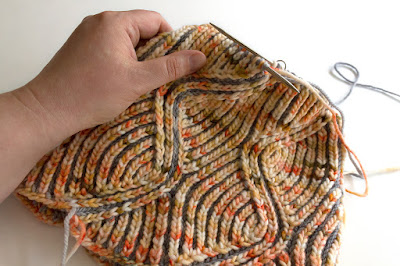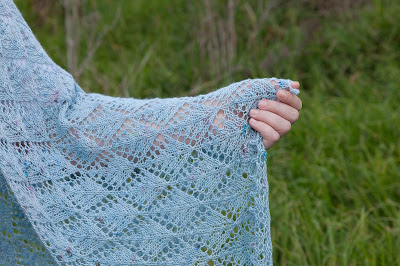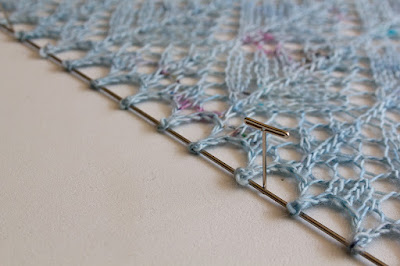I like the perfectly invisible graft that this technique makes possible - for me, it's well worth taking the extra trouble when casting on. My favourite provisional method is the Crochet Provisional Cast On, which involves crocheting around your knitting needle using waste yarn.
The Method:
Begin with a slip knot on the crochet hook. Hold your knitting needle behind the hook, at a right angle.
* Wrap yarn behind the needle and around the hook, then hook it through the loop already on the crochet hook. One stitch has been made on the knitting needle. Move the yarn back behind the needle, and repeat from * until all stitches are cast on.
Chain a few extra stitches and fasten off. Now you can begin working with your 'real' yarn (yay)!
When the time comes to graft both ends of your knitting together, you can easily 'unzip' the waste yarn beginning at the end with the extra crochet chain tail, transferring the live stitches to a knitting needle as you go. If you find you have one stitch too many, you can drop the final half-stitch.
If you'd like to try an alternative method, Marnie MacLean's Plenty of Provisions article in Twist Collective article has a good run-down of the various methods, complete with step-by-step photos.
Blocking Tip:
One advantage of working a cowl flat is that it gives you the option of blocking it flat before grafting. After knitting the final row of my Aether Cowl, I left the cable from my interchangeable circular needles in place, and wet-blocked it as a long rectangle:
The cast-on end, with waste yarn still in place:
After blocking, I unpicked the waste yarn, slipped the live stitches onto my needles, and grafted the ends together using Kitchener Stitch. Have you tried Kitchener Stitch for garter stitch? It actually has fewer steps to remember, since the moves for the front needle and back needle are identical. For tips, check out my follow-up tutorial: How to graft garter stitch.
If your finished graft looks a little wonky, you can 'spot-block' the graft using a spray bottle of water and stretching it out flat to match the rest of the blocked fabric. Hello, invisible graft!




















































